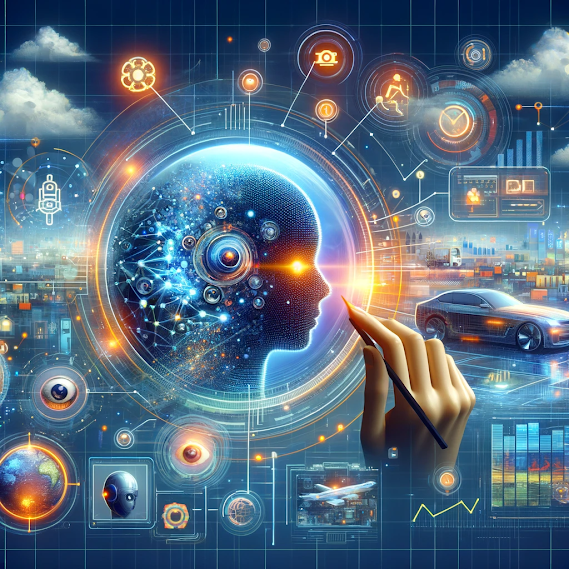Unveiling the Complexity of Visual Recognition: MIT's Study Challenges AI Perception
Unveiling the Complexity of Visual Recognition: MIT's Study Challenges AI Perception
In a groundbreaking study from the Massachusetts Institute of Technology's Computer Science and Artificial Intelligence Laboratory (MIT CSAIL), researchers have introduced a novel perspective on the capabilities and limitations of artificial intelligence (AI) in image recognition. This research, spearheaded by MIT PhD student David Mayo and his team, explores the intricacies of how #AI systems perceive and interpret visual data, challenging our preconceived notions about machine vision and its comparison to human perceptual abilities.
Introducing Minimum Viewing Time (MVT)
At the heart of this study is the development of a new metric termed "Minimum Viewing Time" (MVT), designed to assess the complexity of image recognition tasks. MVT measures the time required for humans to accurately identify an image, offering insights into the challenges faced by #AI in processing complex visual information. This metric serves as a bridge to understand the gap between human and machine vision, particularly in recognizing images that demand more extended viewing times for accurate identification.
The research reveals that while AI models exhibit high performance on standard datasets, they falter when confronted with images that are challenging for humans, indicating significant disparities in AI's ability to process complex visual stimuli. By comparing AI's performance on both straightforward and intricate images, the MIT CSAIL team has illuminated the limitations of current AI models in mirroring human-like perception.
Bridging AI and Human Vision
The implications of this study extend far beyond academic discourse, bearing significant potential for enhancing AI applications in critical fields such as healthcare. In areas where precise interpretation of medical images is paramount, advancing AI's visual recognition capabilities could lead to breakthroughs in diagnostic accuracy and patient care. By delving into the neurological foundations of visual recognition, the research aims to unravel the mechanisms through which our brains efficiently decode the visual world, paving the way for AI systems that more closely resemble human perceptual processes.
This endeavor is not merely a scientific milestone but a crucial step toward developing more sophisticated and dependable #AI vision systems capable of navigating the complexities inherent in real-world visual recognition tasks. The study challenges the prevailing belief that AI systems have outstripped human vision, highlighting the necessity for more realistic benchmarks and equitable comparisons between machine and human perception.
A Call to Action for the AI Community
As the findings are presented at the 2023 Conference on Neural Information Processing Systems (NeurIPS), the study serves as a clarion call to the AI research community. It urges a reevaluation of the methodologies employed in training and testing AI models, advocating for approaches that ensure #AI systems are not merely proficient in executing simple tasks but are genuinely equipped to tackle the subtleties and intricacies of real-world visual understanding.
This research opens new pathways for #AI exploration, emphasizing the importance of preparing #AI systems for the complexities of visual recognition they will encounter outside laboratory settings. By fostering a more nuanced understanding of the parallels and divergences between AI and human vision, the study lays the groundwork for future innovations in AI technology.
The Path Forward: Realizing Human-like AI Vision Systems
The MIT CSAIL team's research underscores a critical juncture in AI development, highlighting the need for AI systems that can process visual information with the same depth and nuance as human observers. Achieving this level of sophistication in AI vision requires a concerted effort to develop algorithms that not only mimic but also understand the underlying principles of human perception.
To bridge the gap between #AI and human vision, future research must focus on integrating insights from neuroscience and cognitive psychology into AI models. This interdisciplinary approach will be instrumental in creating AI systems that can interpret the world around them as effectively as humans do, with the potential to revolutionize industries reliant on visual recognition, from autonomous vehicles to environmental monitoring.
Moreover, this study emphasizes the ethical considerations in AI development, advocating for transparency, fairness, and accountability in #AI vision systems. As AI continues to evolve, ensuring that these technologies serve the greater good while respecting human values and rights remains paramount.
Embracing the Complexity of Visual Recognition
The MIT CSAIL team's study is a testament to the ongoing journey of discovery and innovation in AI research. By challenging existing perceptions of AI's capabilities in visual recognition, the research not only sheds light on the current limitations of AI models but also charts a course for future advancements that more closely align with human perceptual abilities.
As we look to the future, the quest to develop #AI systems with human-like vision remains a formidable challenge, yet one that holds immense promise for transforming our interaction with technology and the world. This study not only contributes to our understanding of AI and human vision but also inspires a renewed commitment to pushing the boundaries of what AI can achieve, ensuring that the next generation of #AI systems is ready to meet the complexities of the visual world head-on.
The groundbreaking findings from MIT's CSAIL team on the Minimum Viewing Time (MVT) for image recognition have profound implications for the business world, particularly in sectors where visual data plays a crucial role. For industries such as retail, security, and automotive, where accurate and swift image recognition is paramount, the insights into AI's visual processing challenges can drive the development of more advanced AI models. These enhanced models can significantly improve the efficiency and reliability of tasks like inventory management through visual stock tracking, facial recognition systems for enhanced security measures, and autonomous vehicle navigation systems that better mimic human perceptual processes. By understanding and narrowing the gap between AI and human vision, businesses can leverage AI to not only streamline operations but also open new avenues for innovation and service enhancement, ultimately leading to a competitive edge in the rapidly evolving digital marketplace.


.jpeg)


Comments
Post a Comment